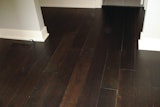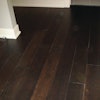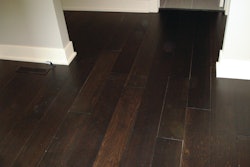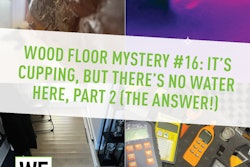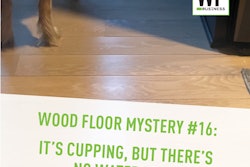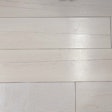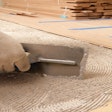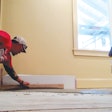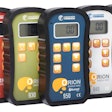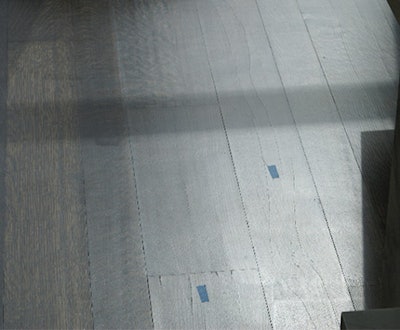
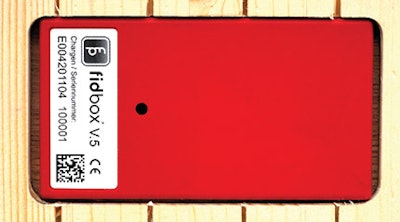 Data loggers such as Fidbox can be left in the wood floor to monitor job-site conditions; the Fidbox battery can last up to six years.
Data loggers such as Fidbox can be left in the wood floor to monitor job-site conditions; the Fidbox battery can last up to six years.
 Such devices can generate a report showing relevant data such as temperature and relative humidity.
Such devices can generate a report showing relevant data such as temperature and relative humidity.
As wood flooring inspectors, we are asked to determine the reason why a floor has failed. In my inspections, I find that more than 90 percent of the time the failure has to do with moisture—either too little or too much. As part of the inspection, we interview installers about their documentation. In general, I find very little information is collected prior to installing the wood floor. Good practices include documenting RH and temperature of the job site, subfloor moisture content and wood flooring MC. Most contractors tell me they "don't have the time" to document all of the readings required by the manufacturer or the NWFA. That begs a bigger question: "Do you have time to replace the floor?"
Even when all the readings are carefully documented and a wood floor is installed under the ideal conditions, sometimes moisture problems happen months or even years later that seem out of the realm of "normal." The problem is that, without knowing what the conditions were in that space, contractors can be left on the hook for a problem that may have been completely out of their control.
Fortunately, with today's technology, contractors can use something called a "remote data logger" to gather that data from the home or gym both before a wood floor is installed and long after they leave the job site, and doing so can potentially save thousands upon thousands of dollars. For example, Corey Cathcart of Integrity Floors in Tampa, Fla., used a device called the HMbox on one of his high-end job sites where he installed 5-inch maple in a large warehouse used for housing a collection of expensive cars. The HMbox is left on a job site adhered to the substrate near a wall in an area with no foot traffic and uses a cellular connection that provides the RH and temperature of the interior, along with the RH and temperature of the substrate, gathered every hour (to show a trend). This report can be printed or emailed to the builder/inspector. After Hurricane Irma, that maple floor severely cupped, and the GC and client both questioned Cathcart's installation practices, trying to pin the blame on him. Cathcart was able to download the report that showed a spike in temperature and RH at the job site for days; the RH readings were over 90% for days on end. As it turns out, the power had gone out and the backup generator had kicked on but eventually ran out of gas, rendering the HVAC useless. The data from the HMbox saved Cathcart what could have been a legal battle over responsibility for the cupped floor.
Other devices can be actually installed within the floor. With one such device, the Fidbox, the contractor routers out a space in the bottom of a board and installs the device, about the size of a smart phone, in the floor. It collects RH and temperature data for the ambient environment three times a day; the data can be collected via Bluetooth. Some contractors build the cost of one of these devices into every job. For example, Dillon Moore of Moore Flooring in Chico, Calif., had a job that ended up cupping months after the flooring was correctly acclimated and installed. The Fidbox proved humidity in the house skyrocketed after the homeowner left for months and shut off the HVAC. "The Fidbox itself cost me only $250, but it saved me over $52,000, as well as the homeowner moving out and having to refinish or replace the hardwood floor," Moore says.
When it comes to protecting yourself from liability, the more data you have about the job site, the better your chances of avoiding the time and hassle of lengthy legal battles about problem floors.
This article was paid for by Fidbox LLC, where Scott Taylor is director of business development. For more information, visit www.fidbox.net.











